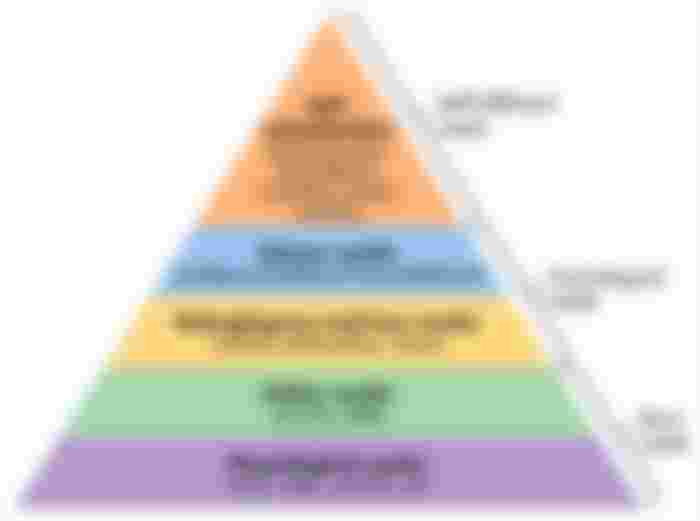Now, three people have laid down a solid foundation through which industries were able to increase their productivity rate with increased efficiency.
Frederick Taylor has conducted the Time and Motion studies for his Scientific Management approach, Henri Fayol has extensively discussed the Managerial functions in the Administration approach and Max Weber has laid down the Bureaucratic approach. The journey didn't end here as much work still needed to be done to cover up some of the flaws these theories had.
Don't be mistaken, most of these theories are still in use to this day and yielding good profit but mostly in the industrial sector.
A new era is approaching, Elton Mayo, Abraham Maslow, Douglas McGregor among others will contribute more to Management theories.
Elton Mayo
The industrial age was starting to experience more growth but some things were still lacking.
Elton Mayo who was a psychologist proposed the Human relations approach.
He wanted to find out how Psychological and Social processes affected the employee's performance as well as how people worked as a group.
So, he conducted an experiment that will later be known as the Hawthorne effect.
He went to a particular factory with his team, arranged everyone in groups, and instructed the light of the factory to be increased and it was, the productivity rate was high. He was satisfied with this result.
So, he instructed the light to be dimmed and it was, the productivity rate was still high. This was a puzzle.
He then instructed the light to be returned to its normal lighting level and the productivity rate was still high.
The conclusion of this experiment was simple.
Money is not the only influencing factor affecting employee's motivation. Employees need to be supervised in a supportive manner to induce productivity and motivation.
Their Social needs must also be met.
If you are still lost as to what the Hawthorne effect means here is a clarification.
Hawthorne effect is the tendency to work better when you know you are being supervised.
Sounds familiar?
The worker's productivity didn't go up because of the lighting(I'm sure you know this by now) but because they knew they were being supervised.
This approach had the following attributes
There was better communication between the manager and the employees
Managers were more involved in production activities
People worked together in various workgroups.
Even though this approach yielded good results, it was still criticized by a lot of scholars we saw this approach as being "Manipulative"
It made people believe that the company was interested in them when in the true sense they were much more interested in productivity.
Abraham Maslow
Abraham Maslow in 1943 came up with his theory still building on the Human Relations approach.
This approach will later be known as the "Maslow's Hierarchy of Needs".
According to him, we are motivated to meet our basic needs before we pursue higher-order needs

He was a firm believer that if all these needs were met, the productivity rate would be at its peak.
Physiological Needs - this refers to the basic needs of people, food, clothing, shelter, rest.
Safety needs - this could be in form of job safety, health as well as personal security
Belonging Need - this refers to friendships, family, workgroups
Esteem- this could be in two ways, the respect you have for yourself as well as the respect you have for yourself.
Self Actualization - Reaching ones full potential
In practice, this is how it is going to be
The manager takes care of the food in the company by providing a canteen and food breaks as well as paying the wages that would take care of housing and clothing
He can then move on to providing job security as well as health insurance, having security personnel in the building and health care personnel
The manager can then proceed to creating various workgroups and organizing group trips which helps to create a sense of belonging among employees
The next he does is to reward good employees by a raise or promotion for the effort they put in towards achieving organizational goals
Lastly, the company can decide to fund formal training to ensure the employees attain their full potential.
Isn't this smart?
It had its implications
Leaders in the organization will have to assist employees and the team members to satisfy their needs
Once a need is satisfied, it seizes to be a motivator.
Douglas McGregor
He was a professor at MIT who was also interested in what motivates people to work which was still based on the human relations approach.
He believed peoples believes could define a person behavior so he came up with the popular THEORY X AND THEORY Y
Theory X
This theory believes that the average man is lazy, lacks ambition, is very gullible, and resistant to change. So, without the manager's intervention, people won't be able to work productively. He believed employees needed to be persuaded, punished, and controlled if they are to work effectively.
Theory Y
This theory believes people are ready to work and are full of potentials, employees would strike to achieve organizational goals if they are committed. Employees are ready to step up if given a chance. The manager is supposed to arrange things so individuals can achieve their own goals at the same time.
These theories are not exactly opposite rather a continuation.
Theory X is based on Maslow's Hierarchy of needs (Physiological needs and Safety needs)
Theory Y is based on the continuation of these needs to Self Actualization.
For a manager to be successful, he must know how to apply this theory and when.
Conclusion
Having vast knowledge of management theories can be very valuable to young entrepreneurs who wish to start their own company. These theories do not end here, other contemporary approaches have also been developed and are still in use, watch out for the final part of this article. I hope this has been helpful.
References
Maslow's Hierarchy of Needs in the workplace

It's interesting reading the evolution of management theories from your article. This is a valuable information for young enterprising individual... Thank you for sharing.